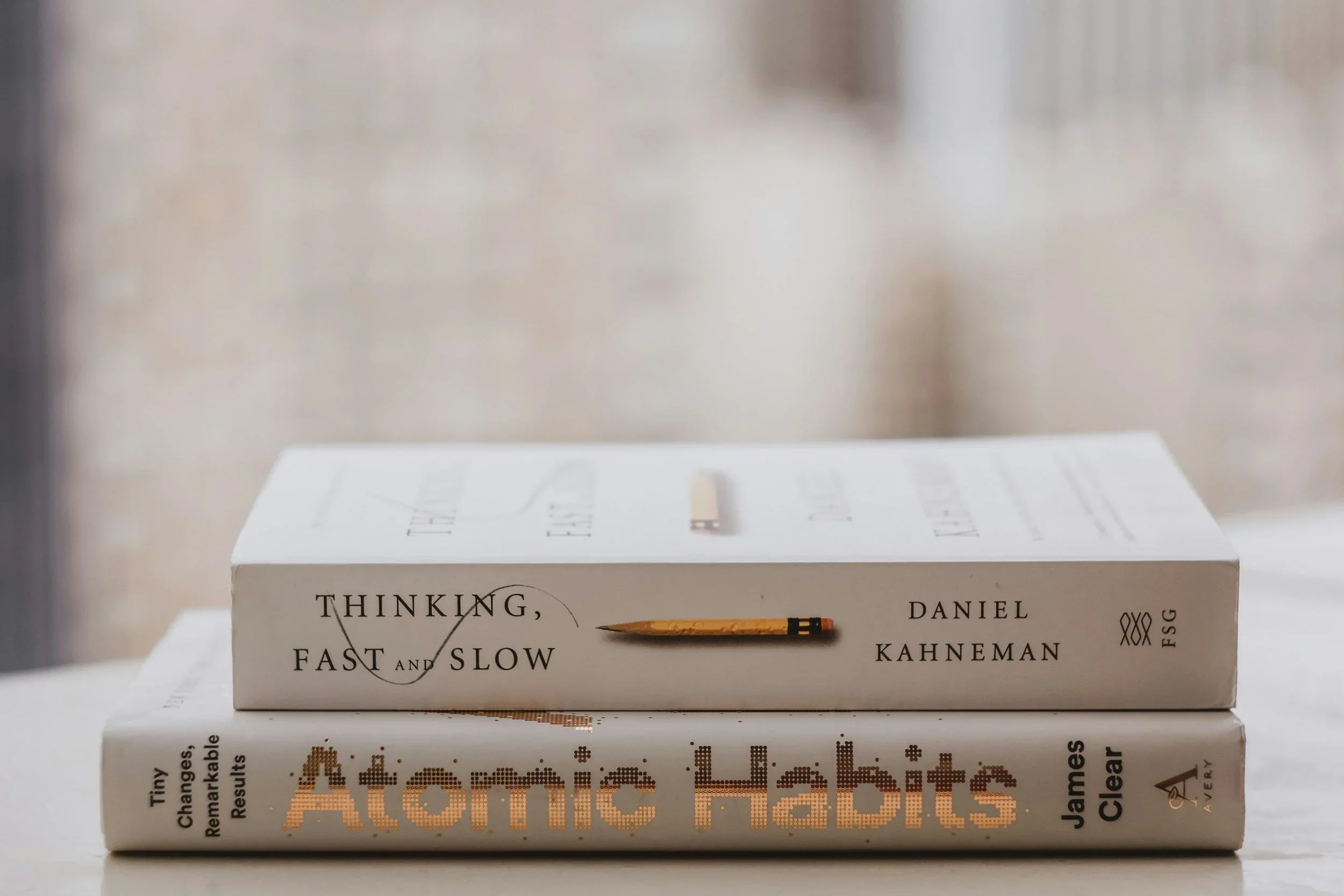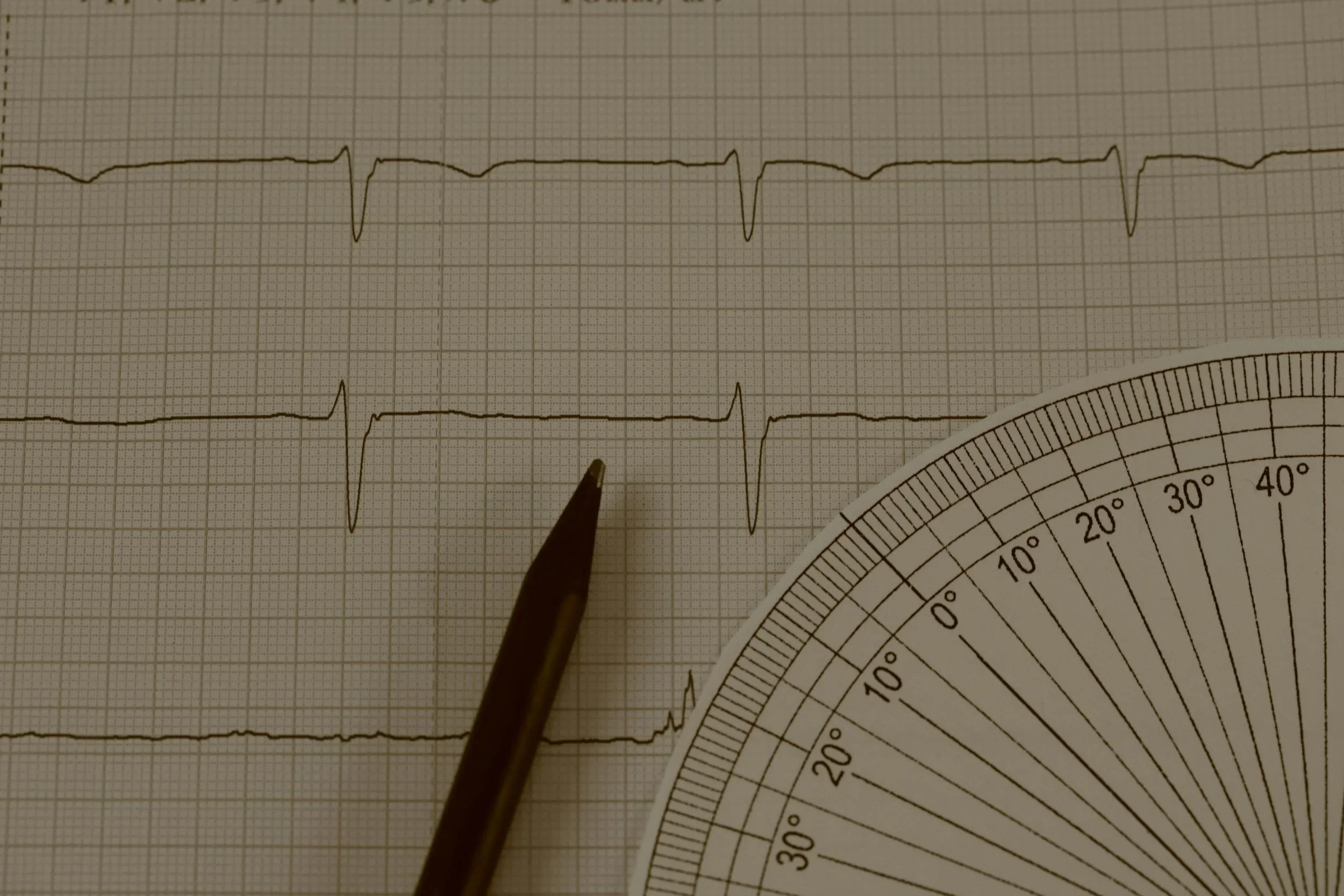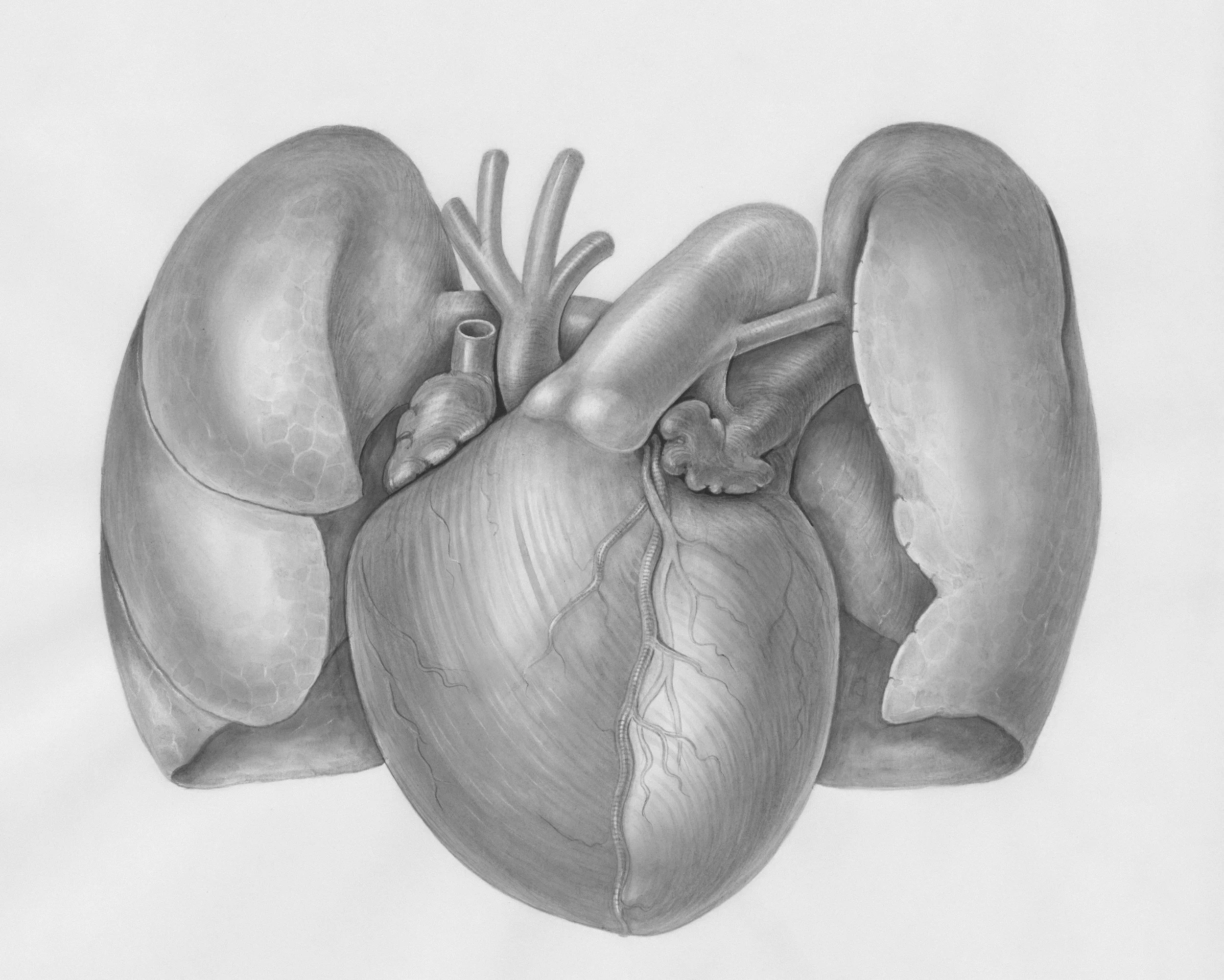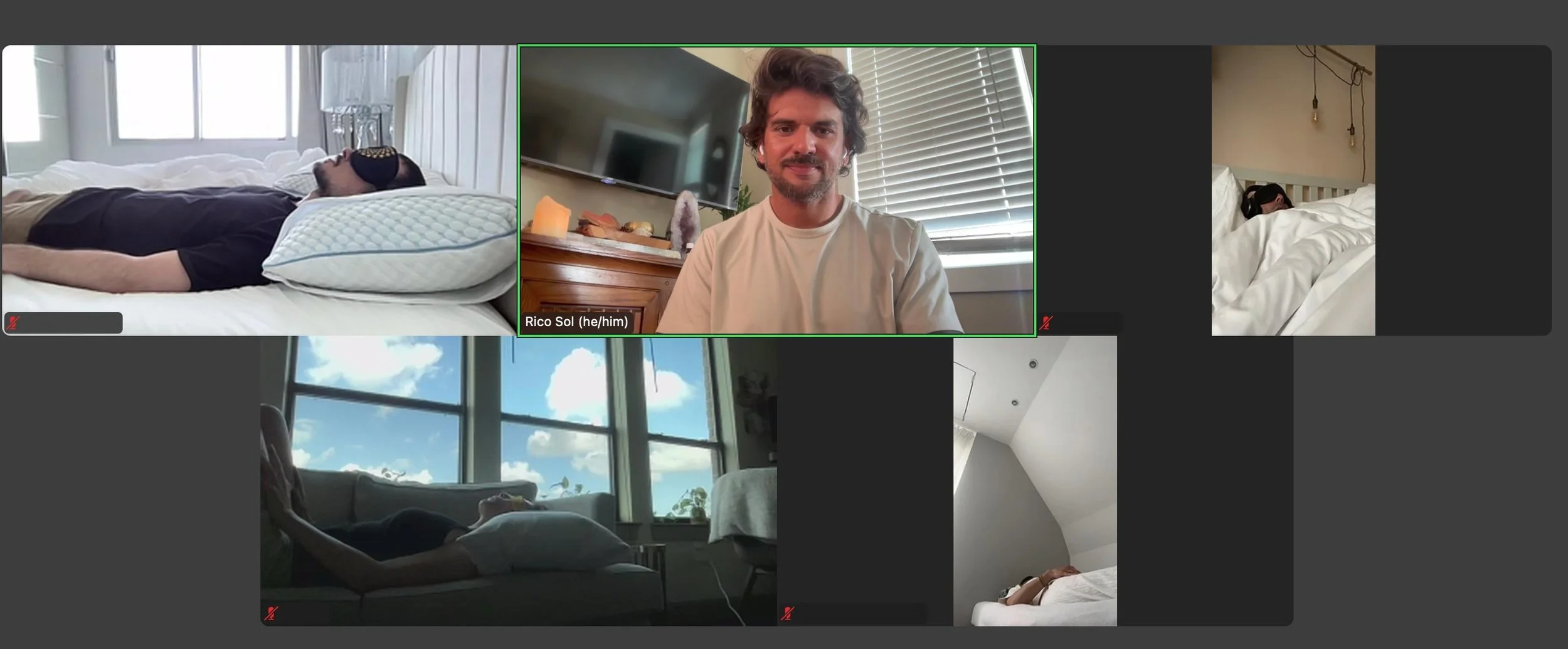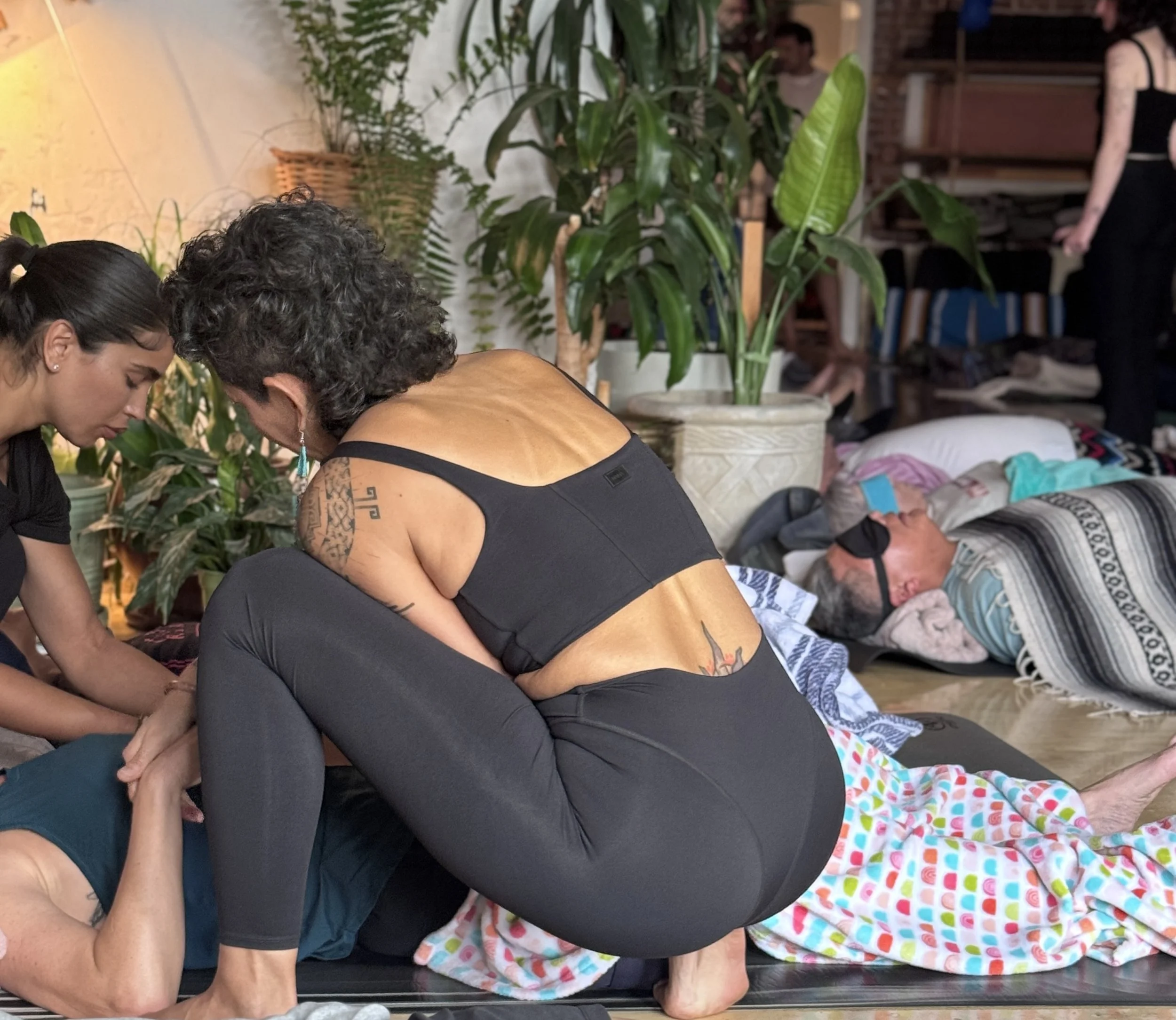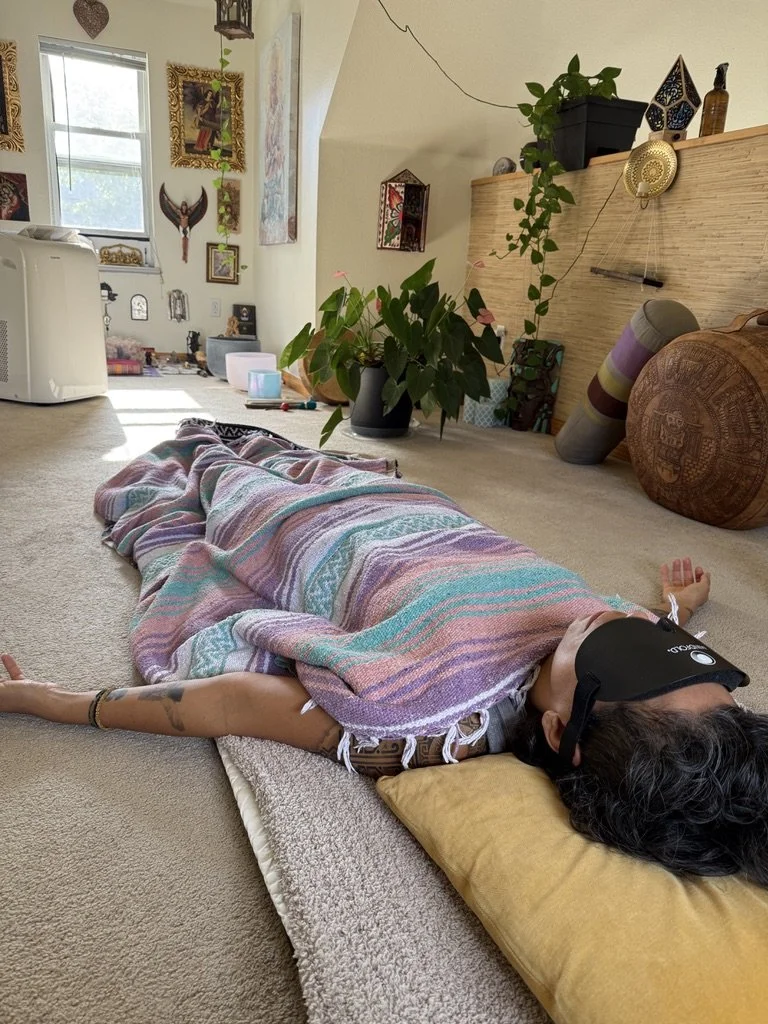When Resentment Becomes My Drug: Why Anger Feels So Addictive
I used to think addiction only meant substances. Then I realized my biggest addiction was emotional: resentment. Science now shows anger and revenge light up the same reward pathways as drugs. This post explores how I got hooked on the chemistry of being wronged, and how I’m learning to choose freedom instead.
When I think about resentment and anger, I notice how they feel more like habits than emotions. They replay in my mind, building their own rhythm. I used to think addiction was about substances like alcohol or nicotine. But what if one of the strongest addictions we face is the addiction to being wronged, the high that comes from pain itself?
How I Got Hooked
I remember a moment when a small betrayal set off a huge emotional storm. My mind replayed it again and again. Each replay gave me a surge of energy, a sense of righteousness. I didn’t realize it at the time, but that surge was chemical. Neuroscientists now say that imagining revenge or dwelling on anger lights up the same reward pathways as addictive drugs. The brain’s pain circuits activate first, and then dopamine floods in when we picture retaliation. It’s relief disguised as justice, and it’s fleeting.
Why It Feels So Good (And Why That’s the Trap)
Anger feels powerful because it flips pain into energy. I go from helpless to charged. My brain registers a threat, then lights up the amygdala, releasing stress hormones that mimic the rush of adrenaline. Research shows that revenge activates dopamine, the same neurochemical involved in drug use. It’s why the rush of being “right” can feel intoxicating. But anger’s high never lasts. The comedown is shame, isolation, fatigue, and the gnawing urge to replay the story again. That’s how resentment becomes its own closed system, one that keeps me stuck.
The Hidden Costs
Holding onto anger isn’t harmless. Studies link chronic resentment with anxiety, depression, and even heart disease. When my nervous system stays in fight-or-flight, my body pays the price. The emotional cost is equally steep. Resentment builds walls. It traps me in old stories about who hurt me rather than who I am becoming. It’s the opposite of freedom.
What Freedom Looks Like
I’ve learned to interrupt the pattern with awareness and breath. The moment I notice that familiar charge in my body, I stop and breathe. I ask myself what I’m actually seeking. Usually, it’s not revenge—it’s dignity, safety, peace. Here are a few practices that help me stay free:
Name the feeling. I call it out before it grows legs. “This is anger.” “This is hurt.” Naming shifts it from unconscious to conscious.
Get curious. What do I think I’ll gain by holding on? What might I lose if I let go?
Forgive, for me. Forgiveness is not agreement. It’s self-liberation. It re-routes the brain from the revenge network to regulation and empathy.
Move the energy. Breathwork, writing, and somatic release let the charge move through instead of taking root.
Surrender control. I don’t need to carry it all.
Serve instead of stew. When I shift from resentment to contribution, I reclaim power.
The Invitation
If resentment has been looping in your mind, ask yourself: what am I getting from this? How is this serving me? What might happen if I stepped off the loop and breathed instead? Anger can be sacred—it can protect, inform, awaken boundaries. But when it becomes my fuel, I lose choice. The moment I recognize the pattern, I get to choose again. Resentment is a slow poison disguised as power. Awareness and breath are the antidotes.
Practicing the Way: How Thoughts and Actions Create Reality
Your thoughts and actions are shaping your life—moment by moment. Drawing from Practicing the Way by John Mark Comer and Dr. Joe Dispenza’s teachings on coherence and transformation, Rico Sol shares how intentional spiritual practices like Sabbath, prayer, and breathwork rewire the nervous system and align you with a higher reality.
I’ve been reflecting deeply on how our thoughts and actions shape our lived experience. Not as an abstract idea, but as a daily, embodied truth.
Dr. Joe Dispenza often says, “Your personality creates your personal reality.” Meaning, your thoughts, emotions, and behaviors are not just internal states; they are creative forces that mold the life you experience.
Recently, as I’ve been reading Practicing the Way by John Mark Comer, I’ve been noticing how spiritual formation and neuroscience point to the same principle: what we repeatedly think, feel, and do becomes who we are.
Comer writes about crafting a “Rule of Life”—a rhythm of intentional practices that reorient our hearts toward love, rest, and presence. Dispenza calls it reprogramming the mind and body toward coherence.
Both are pointing to the same path: transformation through practice.
My Current Practices
I’ve been implementing a few of these rhythms from Practicing the Way and witnessing subtle but profound shifts in how I feel, think, and show up:
Sabbath
Refraining from buying, selling, or working for one day. Turning off my phone, walking by the ocean, or simply sitting in stillness. Creating sacred space in a world addicted to productivity.
Prayer & Solitude
Dr. Dispenza talks about moving from “thinking to being.” These practices help me do just that—moving from mental chatter to embodied awareness. Prayer, for me, is not always words—it’s breath. It’s the space between inhale and exhale where I meet my Higher Power.
Generosity
Comer frames generosity as resistance to consumerism. Dispenza would say it’s how we signal to the universe that we already have enough. In giving, I reinforce abundance; I train my nervous system to trust life.
Community & Service
Transformation doesn’t happen in isolation. I’ve learned that serving others through breathwork, teaching, or even checking in with a friend creates coherence between my inner world and the collective field we all share.
Where Science Meets Spirit
Dr. Dispenza’s work helps me understand, on a biological level, what Comer teaches spiritually:
Thoughts fire neurons.
Actions wire them together.
Habits make them automatic.
When I practice rest, generosity, or prayer, I’m literally rewiring my brain and body to live in alignment with presence, peace, and love.
When I think elevated thoughts—gratitude, joy, trust—I’m creating coherence between my heart and brain.
That’s not just theology or theory. It’s a practice of creating my personality, and in turn, my reality.
The Practice Becomes the Person
I’m learning that the spiritual journey isn’t about knowing more—it’s about embodying what we already know.
As Comer says, “We don’t drift into transformation; we practice our way into it.”
And as Dispenza reminds us, “To change is to become greater than your environment, your body, and your past.”
Both perspectives invite the same thing: to live awake.
To choose, again and again, the thoughts and actions that align with who we are becoming.
✨ Reflection Prompt
What are the small thoughts or habits you’re rehearsing each day?
Are they reinforcing the past—or creating the future you desire to live in?
Maybe it’s time to pause, breathe, and practice your way into a new reality.
Heart Rate Variability: A Window into Your Body’s Inner Wisdom
Heart Rate Variability (HRV) is more than just a health metric—it’s a reflection of how resilient, adaptable, and alive your nervous system truly is. By learning to regulate your breath, rest deeply, and return to coherence, you can literally slow your biological aging and increase your capacity for clarity, flow, and freedom.
We often think of the heart as something that simply beats.
But what if your heart is actually speaking—giving you real-time feedback on your stress levels, emotional state, and even your biological age?
That’s where Heart Rate Variability, or HRV, comes in.
What Is HRV?
HRV measures the tiny variations in the time between heartbeats—for example, 0.86 seconds between one beat and 0.92 seconds to the next.
Contrary to what you might expect, a more variable rhythm (higher HRV) is actually healthier.
A flexible heart rhythm means your nervous system can quickly adapt to change, shifting between fight-or-flight and rest-and-digest states with ease.
Think of HRV as your body’s internal adaptability score. The higher it is, the more resilient and balanced your system tends to be.
How HRV Reflects Biological Age
While your chronological age measures the years you’ve lived, biological age reflects how well your body is functioning.
Research has shown that higher HRV is associated with lower biological age, greater stress resilience, and a longer lifespan.
In other words, your nervous system’s flexibility mirrors your body’s overall vitality.
When HRV is consistently low, it can indicate chronic stress, poor recovery, or inflammation—all factors that accelerate cellular aging.
When HRV is high and stable, it’s a sign that your system is youthful, adaptive, and in balance.
What Affects HRV?
Many factors influence your HRV both positively and negatively. Here are a few key ones:
🧠 Stress and Emotional Regulation
Chronic stress, overthinking, or emotional suppression lowers HRV by keeping the body in a sympathetic fight or flight state.
😴 Sleep Quality
Deep, restorative sleep naturally elevates HRV. Inconsistent sleep or late-night stimulation does the opposite.
☕ Caffeine, Alcohol, and Substances
Overuse of stimulants or depressants taxes the nervous system and blunts HRV response.
🏃♂️ Movement and Recovery
Regular, moderate movement (especially breath-centered exercise like yoga or walking) increases HRV. Overtraining lowers it.
💓 Connection and Breath
Moments of genuine presence, gratitude, or connection can instantly elevate HRV through the vagus nerve, your body’s “calm signal.”
How a Daily Practice Can Improve HRV
The most powerful part?
You can train your HRV the same way you’d train a muscle.
Consistent practices that regulate your nervous system, such as conscious breathwork, meditation, and heart-coherence breathing, increase vagal tone and improve HRV over time.
Here’s how to start:
🌬️ 1. Practice Heart Coherence
Breathe in for 5 seconds, out for 5 seconds, while bringing to mind something you appreciate. This synchronizes heart and brain rhythms, raising HRV in minutes.
🌿 2. Prioritize Recovery
Treat rest as training. Deep sleep, hydration, and slowing down after stressors signal safety to your body.
📱 3. Track Progress Mindfully
If you use tools like WHOOP, Oura, or Apple Watch, notice patterns rather than obsessing over numbers. HRV fluctuates daily—what matters is the trend over time.
🫶 4. Breathe Into Presence
Return to the body throughout your day. Each conscious breath creates a ripple effect of regulation, coherence, and vitality.
Returning to youth & regulation
Your HRV is more than a number—it’s a mirror of how deeply you’re living in alignment with your biology and your breath.
Each moment of coherence, gratitude, and presence is a signal to your body: “I am safe. I am here. I can rest.”
When you train your nervous system to return to balance, you don’t just feel younger, you become younger, from the inside out.
The Magic of Pairing somatic work with an integration practice: Transformation Through the Body
When breathwork and coaching meet, transformation becomes embodied. Over time, the body learns to trust safety, the mind softens its grip, and new ways of being take root. Through somatic release and conscious integration, you don’t just change, you return home to yourself.
In a world obsessed with thinking our way into change, breathwork offers a different entry point, one that begins in the body. When paired with coaching, breathwork becomes not just a tool for relaxation or release, but a powerful pathway to lasting transformation.
Why Somatic Work Matters
The body holds stories the mind has long forgotten. Emotional imprints, patterns of protection, and learned responses are stored in our nervous system. Somatic work, especially conscious breathwork, helps us access and unwind those layers.
When we breathe intentionally, we create the physiological conditions for change:
Regulated nervous system — shifting from survival into safety and expansion
Heart–brain coherence — aligning emotion and thought
Access to subconscious material — surfacing memories, insights, and emotions ready to be integrated
This is where transformation begins. Not through force or willpower, but through safety, surrender, and presence.
The Role of Coaching: Integration & Embodiment
While breathwork opens the door, coaching helps you walk through it consciously. After a powerful session, insights arise—realizations about patterns, desires, or unresolved emotions. Coaching provides the structure to integrate those insights into daily life, turning moments of awareness into embodied change.
Through reflective conversation, accountability, and compassionate challenge, coaching supports you in:
Translating insights into action
Building new habits aligned with your vision
Rewiring beliefs and narratives
Staying consistent through the ebb and flow of transformation
Why 3–9 Months?
Transformation takes time, and your nervous system needs space to trust the process. Over the course of three to nine months, the rhythm of breathwork and integration creates an alchemy that single sessions can’t replicate.
Our clients find that:
In the early months, they begin to regulate and release.
By mid-process, they integrate and reorient toward their future self.
By the end, they’re embodying new ways of being. Calm, confident, creative, and free.
This journey is not about fixing yourself; it’s about returning to yourself.
The Somatic–Coaching Synergy
When breathwork and coaching are woven together, the result is more than growth; it’s evolution. You move from understanding concepts to living them, from reacting to responding, from chasing goals to creating from alignment.
Each session becomes a bridge between your mind and body, between knowing and being.
Returning to Sol
This is the essence of my work at Returning to Sol (formerly Eastern Sun Coaching): guiding you to reconnect with your breath, your body, and your truth. Because when you pair somatic practice with conscious integration, you don’t just transform, you return home.
The Impacts of Breathwork on Physiology
Breathwork is more than a stress-relief tool — it’s a powerful way to influence your body’s physiology. From calming the nervous system to improving heart rate variability and even supporting immune function, intentional breathing offers measurable benefits. Backed by science and rooted in ancient wisdom, breathwork gives you a simple yet profound tool to shift your state and support your health.
We often think of breathing as something automatic. But when we bring awareness and intention to the breath, we tap into one of the most powerful tools we have for influencing the body. Science is beginning to confirm what many ancient traditions have long known: breathwork profoundly alters our physiology.
1. Resetting the Nervous System
Your breath is like a remote control for your nervous system. Slow, deep breaths activate the parasympathetic system—the “rest and digest” mode that helps you feel calm and grounded. On the other hand, faster or more energizing patterns can stimulate the sympathetic system, which gears the body up for action.
Research supports this finding: studies have shown that slow-paced breathing can increase parasympathetic activity, improve emotional regulation, and even lower blood pressure (Zaccaro et al., 2018; Jerath et al., 2015). With practice, you can learn to use your breath to shift how your body responds to stress in real-time.
2. Balancing Oxygen and Energy
It’s easy to think that breathing is just about getting more oxygen, but carbon dioxide plays a key role, too. The “Bohr effect” shows that higher CO₂ levels actually help oxygen release into your tissues more efficiently. Breathwork helps you train this balance, which supports energy, stamina, and recovery.
In other words, how you breathe determines how well your cells get the fuel they need.
3. Heart Health and Resilience
Your heart and breath are deeply connected. One of the best markers of resilience in the body is heart rate variability (HRV)—the subtle variation in time between heartbeats. Breathwork, especially slow rhythmic breathing, has been shown to increase HRV (Lehrer & Gevirtz, 2014). A higher HRV indicates that your body can respond flexibly to stress and then return to balance.
Think of HRV as your body’s “bounce-back ability.” Breathwork strengthens it.
4. Stress and Hormonal Balance
Chronic stress leads to high cortisol levels, depleting your energy and affecting sleep, digestion, and mood. Breathwork helps calm the stress response by influencing the hypothalamic-pituitary-adrenal (HPA) axis—the system that governs cortisol.
Studies have shown that slow, intentional breathing reduces cortisol levels, improves mood, and even enhances sleep quality (Perciavalle et al., 2017; Ma et al., 2017).
5. Boosting Immune Function
One of the most fascinating areas of research shows that breathwork can influence the immune system. In a landmark study, trained participants who practiced breathing and cold exposure techniques were able to reduce inflammatory markers in their bodies (Kox et al., 2014).
This suggests that through breath, we may have more influence over immunity and inflammation than once thought.
The Takeaway
Breathwork isn’t just a relaxation tool; it’s a physiological practice that impacts nearly every system in the body. By choosing how you breathe, you can lower stress, improve cardiovascular health, support your immune system, and boost energy on a cellular level.
Every conscious breath is an opportunity to shift your state and support your well-being.
So the next time life feels overwhelming or your energy dips, pause. Take a slow, intentional breath. Science and experience both show it’s one of the simplest, most powerful ways to bring your body back into balance.
References
Jerath, R., Edry, J. W., Barnes, V. A., & Jerath, V. (2015). Self-regulation of breathing as a primary treatment for anxiety. Frontiers in Psychology, 6, 1–10. https://doi.org/10.3389/fpsyg.2015.01068
Kox, M., van Eijk, L. T., Zwaag, J., & et al. (2014). Voluntary activation of the sympathetic nervous system and attenuation of the innate immune response in humans. Proceedings of the National Academy of Sciences, 111(20), 7379–7384. https://doi.org/10.1073/pnas.1322174111
Lehrer, P. M., & Gevirtz, R. (2014). Heart rate variability biofeedback: How and why does it work? Frontiers in Psychology, 5, 756. https://doi.org/10.3389/fpsyg.2014.00756
Ma, X., Ding, X., & Zhang, J. (2017). The effect of diaphragmatic breathing on attention, negative affect, and stress in healthy adults. Frontiers in Psychology, 8, 874. https://doi.org/10.3389/fpsyg.2017.00874
Perciavalle, V., La Rosa, M., & et al. (2017). The role of deep breathing on stress. Neurological Sciences, 38(8), 1421–1426. https://doi.org/10.1007/s10072-016-2790-8
Zaccaro, A., & et al. (2018). How breath-control can change your life: A systematic review. Frontiers in Human Neuroscience, 12, 353. https://doi.org/10.3389/fnhum.2018.00353
Activating, Downregulating, and Therapeutic Breathwork: Finding Balance in Your Nervous System
Breathwork is more than just deep breathing, it’s a toolkit for shifting your state of mind and body. From energizing activating practices, to calming downregulating techniques, to transformational therapeutic journeys, each type of breathwork serves a different purpose. Learn how to choose the right practice for your needs, and how often to use them for balance, resilience, and well-being.
One of the most powerful aspects of breathwork is its ability to shift your mental and emotional state, whether you want more energy and focus, deep rest, or a profound inner journey. Breath practices can be categorized into three main groups: activating, downregulating, and therapeutic. Understanding the difference will help you choose the right breath for the right moment.
Activating Breathwork
Activating breathwork practices stimulate the body and mind. They engage the sympathetic nervous system, which supports alertness, motivation, and mobilization. These techniques typically involve:
Faster breathing patterns (e.g., Breath of Fire, bellows breath).
Strong, full inhales to flood the body with oxygen.
Benefits:
Boosts energy and focus
Enhances mood and motivation
Helps move stuck emotions or stagnant energy
Prepares the body for movement, work, or creativity
How often: A few minutes in the morning, before a workout, or when you need a mental boost. Activating breath is best in short bursts (2–10 minutes).
Downregulating Breathwork
Downregulating practices are designed to slow everything down. They activate the parasympathetic nervous system, which is known as the “rest and digest” state. These practices typically involve:
Slower, smoother breathing patterns (e.g., diaphragmatic breathing, box breathing).
Nasal breathing (naturally calming).
Longer exhalations to signal safety and relaxation.
Benefits:
Reduces stress and anxiety
Supports sleep and recovery
Lowers blood pressure and heart rate
Enhances clarity and presence
How often: Safe to practice daily, even multiple times a day—before bed, after stressful events, or whenever you need to reset.
Therapeutic Breathwork
Therapeutic breathwork is in a category of its own. This includes practices like holotropic breathwork, rebirthing, and conscious connected breathing. These are longer, deeper sessions designed not just to shift state, but to support emotional release, trauma healing, and expanded states of consciousness.
These practices often involve:
Extended sessions (usually 1–3 hours).
Continuous breathing patterns that bypass the usual rhythm of inhale-exhale.
Music, facilitation, or group settings to create a container for the experience.
Benefits:
Supports processing of stored emotions and trauma
Can open access to deeper insights and altered states
Offers profound opportunities for healing and transformation
How often: A good rule of thumb is no more than once a week. Ideally, these sessions are facilitated by a trauma-informed practitioner who can provide guidance and support. More frequent practice can be done under the care of a qualified facilitator who knows your unique needs.
Putting It All Together
Think of breathwork as a toolkit:
Activating for energy and motivation
Downregulating for rest and calm
Therapeutic for deep healing and transformation
Each has its place, and balance is key. Daily short practices can help you regulate your nervous system, while therapeutic sessions, done thoughtfully and with support, can help you explore the deeper layers of your being.
Tips & Tricks for Getting the Most Out of Virtual Breathwork
Virtual breathwork gives you the freedom to dive deep from the comfort of home. With just a few simple preparations—like creating a cozy space, using quality headphones, and setting aside time for integration—you can unlock the full potential of your session. Here are my top tips to make your online breathwork practice powerful and transformative.
Breathwork can be a powerful practice for releasing stress, expanding awareness, and reconnecting with yourself. While in-person sessions carry their own magic, virtual breathwork offers the unique gift of practicing deeply from the comfort of your own space. Whether you’re joining me for a one-on-one session or in a group, here are some simple tips and tricks to help you get the most out of your experience.
1. Create Your Space Intentionally
Set up a quiet, private spot where you won’t be interrupted. Dim the lights, light a candle (safely), and grab a blanket, pillow, and eye mask. A little intentionality in your environment signals to your body and mind that this is sacred time for you.
2. Use Good Headphones or Speakers
The music and guidance play a big role in shaping your breathwork journey. Quality headphones or speakers will help immerse you more fully in the soundscape, so you can drop in deeper without distraction. I prefer headphones and use a pair of AirPods 2 for sound isolation and a fully immersive experience.
3. Position Your Body Comfortably
Most people find it best to lie down on a yoga mat, bed, or couch. If you’ve had a long day and are feeling tired, it’s best to avoid the bed as it can signal your brain that it’s time for sleep. Keep a pillow under your head and perhaps another under your knees if it feels good. Have a blanket handy—you may get warm or cool as energy moves through your body.
4. Eliminate Tech Distractions
Put your device on “Do Not Disturb” and make sure your camera is set up before we begin. This way, once the session starts, you won’t have to fumble with technology.
5. Give Yourself Time on Both Sides
Schedule a little buffer time before and after the session. Arrive a few minutes early to settle in, and plan to rest quietly for 10–15 minutes afterwards. Integration is just as important as the breathwork itself.
6. Stay Open and Trust the Process
Each session is unique. You may feel tingling, emotions, deep calm, or breakthroughs. There’s no “right” way to experience breathwork. Trust that whatever arises is exactly what’s meant to move through you in that moment.
7. Have Water and Journal Nearby
Afterwards, sip some water and take a few notes. Journaling can help you capture insights or emotions before they fade. This becomes a beautiful record of your journey over time.
8. Know You’re Supported
Even though we’re not physically in the same room, you’re never doing this work alone. I’ll be holding space for you, guiding you through the process, and ensuring you feel safe every step of the way.
Final Thoughts
Virtual breathwork is a powerful way to deepen your connection to yourself without leaving home. By preparing your space and giving yourself the gift of presence, you’ll be ready to fully step into the experience.
If you’d like to explore virtual breathwork with me, reach out here. I’d love to support you on your journey. Not finding a time that works? Reach out to me via email to determine if there’s additional availability, rico@easternsuncoaching.com.
Tetany in Breathwork: What It Is and How to Work With It
If you’ve ever experienced tingling, cramping, or “claw hands” during breathwork, you’ve encountered tetany. While it can feel strange, it’s a natural and temporary response. Learn what tetany is, why it happens, and how to work with it so you can approach your breathwork practice with greater ease and confidence.
If you’ve explored breathwork, you may have noticed some surprising sensations in your body. One of the most common and often most misunderstood is something called tetany. It can feel a little strange, even alarming at first, but once you understand what’s happening, you’ll see that it’s a natural part of the process for many people.
What Is Tetany?
Tetany is the term used to describe involuntary muscle contractions that sometimes occur during breathwork. It often shows up as:
Tingling or numbness in the hands, feet, or face
Cramping or stiffness in the hands (sometimes called “lobster claws”)
A sense of tightness in the mouth or jaw
It can look and feel unusual, but it’s usually temporary and passes quickly.
Why Does Tetany Happen?
The breath changes our internal chemistry. When we breathe more deeply or rapidly than usual, the levels of carbon dioxide (CO₂) in the blood shift. This alters the balance of oxygen, pH, and calcium in the body, which can cause nerves to fire more easily, leading to tingling and muscle contractions.
From a nervous system perspective, tetany can also reflect a surge of energy moving through the body as it releases tension or processes stored stress.
What Tetany Can Teach Us
Instead of thinking of tetany as a problem, it can be helpful to view it as a signal. Your body is showing you where it may be holding on—whether that’s physical tightness, emotional guarding, or simply the nervous system recalibrating.
Everyone’s body responds differently. Some people never experience tetany at all, while others notice it frequently. Neither is better or worse; it’s simply part of your body’s unique way of processing breathwork.
How to Work With Tetany
If tetany arises in your practice, here are a few ways to approach it:
Seek support: Especially in longer or deeper breathwork sessions, having a skilled, trauma-informed facilitator can make a world of difference.
Stay curious: Notice the sensations without judgment. Sometimes just observing can soften the intensity.
Ground yourself: Wiggle your fingers and toes, gently stretch, or place your hands on your body to remind yourself you’re safe.
Soften the breath: Slow down, return to nasal breathing, or take a gentle pause. Often, tetany eases within a few moments.
Closing Thoughts
Tetany can feel odd, but it’s not something to fear. With understanding and the right tools, it becomes just another part of the rich landscape of breathwork. Instead of resisting it, you can learn to meet it with curiosity and compassion—allowing your breath to take you deeper into connection with your body and yourself.
The Power of Diaphragmatic Breathing: A Simple Practice for Calm and Clarity
Most of us don’t think twice about how we breathe, yet the quality of our breath directly affects how we feel. Diaphragmatic breathing, sometimes called belly breathing, is a simple, science-backed technique that helps calm the nervous system, boost energy, and bring more clarity into daily life. In this post, we’ll explore why this practice matters and share practical steps to begin breathing in a way that supports your body and mind.
Breathing is something we do all day, every day, without much thought. Yet the way we breathe has a direct impact on how we feel—physically, mentally, and emotionally. When stress builds, our breath often becomes shallow and tight in the chest, keeping our bodies on high alert. The good news? By practicing diaphragmatic breathing, also known as belly breathing, you can gently guide your body and mind back into balance.
Why Diaphragmatic Breathing Matters
In this image, you can see the structure of the diaphragm, or “Diaphragm dome,” which sits under the lungs and the heart, cradling these organs. As the diaphragm moves upward, it compresses the lungs to push air out of them, as it moves downward into the abdomen it allows the lungs to expand into the belly, leading to diaphragmatic breathing.
Diaphragmatic breathing engages the diaphragm, a dome-shaped muscle just beneath your lungs. This deeper, fuller style of breathing has been shown to:
Activate your body’s relaxation response. Slow, steady breaths signal your nervous system to shift out of “fight or flight” and into “rest and digest.”
Improve oxygen flow. Efficient breathing helps deliver oxygen-rich blood throughout your body, boosting clarity and energy.
Regulate stress and emotion. Regular practice can lower heart rate and blood pressure, ease anxiety, and improve mood stability.
Build resilience. With time, diaphragmatic breathing becomes a reliable tool for meeting challenges with calm and steadiness.
Simply put: how you breathe shapes how you feel.
How to Practice
Getting started is easier than you might think:
Find a comfortable position. Sit upright in a chair with your feet on the ground, or lie down somewhere quiet.
Place your hands. Rest one hand on your chest and the other on your belly, just below your ribcage.
Inhale slowly. Breathe in through your nose, letting your belly rise as the lower hand lifts. Try to keep the top hand still.
Exhale fully. Release your breath slowly through your nose or mouth, allowing your belly to relax and fall. Aim for your exhale to be a little longer than your inhale.
Start small. Even one or two minutes of this practice can make a difference. Over time, you can build up to five or ten minutes.
Helpful Tips
Consistency counts. Practicing a little each day is more effective than long, occasional sessions.
Pair it with daily routines. Try a few breaths before meals, while waiting in line, or before bed.
Be patient. Like any new skill, it may feel awkward at first. With practice, your body will remember.
Bringing It Into Your Life
Think of diaphragmatic breathing as a built-in reset button you can press anytime you need it. Whether you’re preparing for an important meeting, calming yourself before sleep, or simply wanting a moment of clarity, this simple technique can help you reconnect with calm and ease. Over time, it becomes less of a practice and more of a natural way of being—supporting you in meeting life with steadiness and presence.
The Benefits of Conscious Breathwork: Science Behind Altered States and Healing
Conscious breathwork is more than relaxation. New research shows it can lower CO₂, unlock altered states of consciousness, and foster emotional healing. Explore how Holotropic and Conscious-Connected breathing may support mental health, reduce depression, and empower self-healing.
Breath is more than survival. It is a tool for transformation. Conscious breathwork, a practice of intentional, connected breathing, is gaining attention not only for stress reduction but also for its ability to open the door to altered states of consciousness. Recent research shows that this powerful practice may enhance well-being, reduce depression, and offer a non-pharmacological pathway to healing
The Science of Conscious Breathwork
A study published in Communications Psychology (Havenith et al., 2025) examined two forms of circular breathwork: Holotropic and Conscious-Connected. Both involve uninterrupted cycles of inhalation and exhalation. The researchers wanted to understand how these breathing practices affect the body and mind.
CO₂ Reduction and Altered States
The study found that as participants engaged in breathwork, their end-tidal CO₂ levels dropped. This reduction was strongly correlated with the emergence of altered states of consciousness (r = −0.46, p < 0.001) (Nature). In simple terms, lowering CO₂ through controlled breathing created a gateway into non-ordinary states of awareness.
Psychedelic-Like Experiences Without Substances
Participants reported experiences often described in psychedelic therapy, including ego dissolution, deep connection, and heightened awareness. These effects were validated using established tools like the MEQ-30 and 11-DASC, showing a close overlap with moderate psychedelic sessions (Nature).
Long-Term Benefits
The depth of the altered state predicted meaningful changes in participants, including improved well-being and reduced depressive symptoms. Importantly, both Holotropic and Conscious-Connected techniques delivered similar benefits, suggesting a common underlying mechanism across breathwork styles (Nature).
The Benefits of Conscious Breathwork for Mental Health
Accessible and Practical
Unlike psychedelic therapies, breathwork is drug-free, scalable, and can be practiced individually or in groups (MedicalXpress).Supports Emotional Healing
By evoking altered states, conscious breathwork may help people process unresolved emotions, similar to the breakthroughs reported in psychedelic therapy.Reduces Stress and Depression
The study highlights that intentional breathwork sessions can contribute to lower depressive symptoms and improved psychological well-being.Empowers Self-Healing
Conscious breathwork is not just about relaxation. It’s an active practice that allows you to access transformative states using your own breath.
How to Begin Conscious Breathwork
Check your health: If you have a heart or lung condition, consult a healthcare professional before starting.
Find a trauma-informed facilitator: Eastern Sun Coaching offers facilitation both virtually and in person, in groups or 1:1.
Set the space: Choose a calm, safe environment. You can review our Preparing for a Breathwork Session information page here.
Stay present: Focus on continuous, unbroken breathing. Observe changes in body sensations, imagery, or emotions.
Integrate afterward: Journal, stretch, or sit quietly to ground insights.
Final Thoughts
The benefits of conscious breathwork go far beyond relaxation. Science now shows that it can shift physiology, unlock altered states of consciousness, and foster healing. By lowering CO₂ levels, this practice taps into a natural mechanism for transformation.
Your breath is more than a life force. It is a gateway to well-being, clarity, and deep connection.
References
Havenith, M. N. et al. (2025). Decreased CO₂ saturation during circular breathwork supports emergence of altered states of consciousness. Communications Psychology. Nature
MedicalXpress. (2025). Circular breathwork induces altered states of consciousness linked to well-being. Link
The History of Breathwork: How Humans and Breath Evolved Together
Breath is humanity’s oldest companion—carried from the savannas of Africa to the mountains of Tibet, from sacred Vedic chants to modern methods like Wim Hof and Heart Coherence. Shaped by climate, culture, and even plant medicines, the story of breathwork is also the story of human evolution. This post traces that journey across millennia, showing how our lungs, rituals, and consciousness have always been guided by the invisible rhythm of the breath.
From the moment our earliest ancestors inhaled the warm African air, breath has been with us. An invisible thread linking biology, culture, and spirit. It is both a survival mechanism and a sacred teacher. Over millennia, humans carried breath across continents, into diverse climates and altitudes, weaving it into rituals, songs, medicines, and philosophies.
The history of breathwork is, in many ways, the story of humanity itself.
The Cradle of Breath: Africa
Two hundred thousand years ago, anatomically modern humans evolved in East Africa. Here, wide nasal passages, dark skin, and efficient sweating equipped us for endurance running under the hot sun. Breath meant survival—fuel for hunting, gathering, and ritual.
Breath also meant spirit. Rhythmic chants, sighs, and drumming rituals carried early humans into trance states, weaving community and connecting them to ancestors. Alongside breath came plants: iboga in Central Africa, kanna in the south, and sacred tobaccos, each fused with breath to deepen healing and vision.
Adapting Breath Across the Globe
As humans migrated beyond Africa, climates and landscapes reshaped our bodies and our breathing. This is where breathwork traditions began to diverge.
Cold Europe & Northern Asia: Noses narrowed to warm icy air, skin lightened to absorb vitamin D more efficiently, and breath slowed to conserve warmth. Celtic and Norse peoples wove breath into ecstatic rituals, bardic chanting, and even battle trances of berserkers. Later, monasteries transformed breath into prayer and Gregorian chant, sustaining devotion through long exhalations.
Highlands of Tibet, the Andes, Ethiopia: Evolution sculpted larger lungs and higher hemoglobin counts. Cultures discovered techniques like Tibetan Tummo breathing, using breath and visualization to generate heat in thin air.
South & East Asia: With monsoons bringing hot, humid summers and cooler, drier winters, people developed a balanced breathing physiology. India birthed pranayama, from alternate-nostril breathing (nadi shodhana) to breath retentions (kumbhaka); while Taoist China refined Tu Na and embryonic breathing, harmonizing breath with qi and the Tao.
Indigenous Americas: From Arctic deep breathing to Amazonian humidity, breath adapted across extremes. Sweat lodges, ayahuasca icaros, and sacred tobacco rituals wove breath into healing and vision.
Oceania & Australia: Seafaring and free-diving forged lung control and endurance. The Aboriginal didgeridoo perfected circular breathing, transforming respiration into continuous sound and spirit.
Breath and Plant Medicine: Expanding Consciousness
Throughout breathwork history, plants and fungi expanded the horizons of human consciousness:
Africa: Iboga ceremonies paired with rhythmic breath and chanting.
Europe: Mushrooms (Amanita, Psilocybe) combined with breath and drumming to induce trance states.
Asia: The mysterious Soma of the Vedas, cannabis in India and China, ginseng and ephedra in Taoist practice, all linked with breath control.
Americas: Ayahuasca, peyote, and San Pedro (huachuma) rituals relied on song, chant, and intentional breathing to guide visions.
Oceania: Kava and betel nut paired with breath-songs in communal ritual.
When plant medicines were unavailable, breath itself became the inner pharmacology, especially in Tibet, India, and Northern Europe.
Breath as Language, Song, and Prayer
Breath evolved beyond survival or ritual; it became voice. Human speech, music, and prayer are all forms of conscious breathwork.
Tonal languages required fine diaphragm control.
Long-vowel languages like Sanskrit, Latin, and Gaelic encouraged sustained exhalations.
Ritual architecture—caves, temples, and churches—was designed for resonance, amplifying the power of breath in chant.
From mantras to psalms, breath-based practices became universal expressions of connection and devotion.
From Science to Modern Breathwork
The Renaissance reframed breath as mechanics (lungs, blood, oxygen), removing its sacred shimmer. Yet breath lived on in opera, theater, and sacred chant. Industrialization dimmed natural breathing with polluted, shallow air, until the 19th century revived the idea of “fresh country breath” as medicine.
In the 20th and 21st centuries, a wave of modern breathwork practices emerged, blending ancient wisdom with contemporary science:
Buteyko Method (Russia, 1950s): therapeutic shallow breathing to manage asthma and stress.
Holotropic Breathwork (Stanislav Grof, Czech, 1970s): accelerated breathing to access non-ordinary states and deep healing.
Wim Hof Method (Netherlands, 2000s): combining cold exposure with powerful breath cycles, echoing Ice Age endurance adaptations.
Conscious Breathwork (inspired by Leonard Orr’s rebirthing movement, 1970s): intentional breathing for trauma release, nervous system regulation, and expanded awareness—drawing on both ancient practices and modern psychology.
Heart Coherence Breathing (HeartMath Institute, 1990s): a science-backed method that slows and smooths breathing to harmonize heart rhythms, regulate the nervous system, and cultivate resilience.
Together, these new lineages demonstrate that breath is not just a survival tool. It is a bridge between physiology, psychology, and spirituality.
A Universal Teacher
Across all geographies, races, and eras, breath evolved with us. Climate sculpted noses and lungs. Plants expanded our consciousness. Language and ritual gave voice to the invisible. Disease and survival forced adaptations. Oceans and mountains tested our endurance.
And through it all, breath remained the bridge: between biology and meaning, medicine and mystery, self and spirit.
When we inhale, we draw from the same atmosphere that has circled Earth for millions of years. When we exhale, we return our part to the whole.
Breath is our oldest teacher. Reminding us that while our paths diverged, the current of life we share is one.
What is Breathwork? A Guide to Conscious Breathing for Transformation
Breathwork is the practice of intentional, conscious breathing that helps regulate the nervous system, reduce stress, and restore balance. From techniques like conscious breathwork and heart coherence breathing to simple daily practices, discover how your breath can unlock clarity, flow, and freedom in everyday life.
In today’s fast-paced world, it’s easy to feel disconnected from our bodies, our purpose, and even our breath. Stress, anxiety, and overthinking become the norm. But the very act that sustains life, breathing, can also become the most powerful tool we have for healing and transformation.
This is the essence of breathwork: using intentional breathing techniques to regulate the nervous system, release stored emotions, and return to a state of balance, clarity, and vitality.
What is Breathwork?
Breathwork is the practice of consciously directing the breath to influence your physical, emotional, and mental state. Unlike automatic breathing, which happens without thought, breathwork brings awareness and intention to each inhale and exhale.
This conscious breathing activates the parasympathetic nervous system, calms stress responses, and creates measurable shifts in energy, focus, and mood. Ancient traditions such as yogic pranayama laid the foundation, and today, modern trauma-informed practices are bringing breathwork back into the mainstream as a simple and accessible path to well-being.
Benefits of Breathwork
The benefits of breathwork extend beyond relaxation. When practiced regularly, it can transform the way you live and lead:
Stress relief and nervous system regulation – Breathing patterns signal safety to the body, reducing anxiety and restoring balance.
Emotional healing – Breathwork allows suppressed emotions to surface and release, creating more freedom and resilience.
Mental clarity – By shifting brainwave states, breath quiets the mind and opens space for focus, creativity, and decision-making.
Physical health – Conscious breathing increases oxygenation, boosts energy, and improves sleep. It’s also been shown to regulate blood pressure and increase HRV.
Spiritual connection – For many, breathwork opens the door to deeper self-awareness and connection with something greater.
Types of Breathwork
There are many forms of breathwork, each designed for a specific purpose. Some of the most common include:
Conscious Breathwork: A continuous breathing technique that facilitates emotional release, healing, and transformation.
Box Breathing: Inhaling, holding, exhaling, and pausing for equal counts (often 4-4-4-4), ideal for focus and calm.
Alternate Nostril Breathing (Nadi Shodhana): A yogic practice that balances energy channels and harmonizes the mind.
Holotropic Breathwork: Similar in outcome to Conscious Breathwork, with a longer, deeper practice aimed at expanded states of consciousness.
Heart Coherence Breathing: A science-backed technique developed by the HeartMath Institute that combines slow, rhythmic breathing with positive emotions to create harmony between the heart and brain.
Each practice serves different needs, from grounding before a big presentation to exploring profound inner transformation.
What is Conscious Breathwork?
Conscious Breathwork is at the heart of many modern practices, and a practice incorporated in our work here at Eastern Sun Coaching. Unlike casual deep breathing, it is a structured process that uses intentional breathing patterns to access the subconscious, regulate the nervous system, and release stored tension.
During a conscious breathwork session, you might:
Breathe in a continuous, connected rhythm without pausing between inhale and exhale.
Activate the body’s natural intelligence to surface emotions, memories, or sensations that need to be processed.
Move from survival mode to creative mode, shifting brainwave patterns and allowing insights to arise.
Experience physical release as the body lets go of stress and stored trauma.
This practice is both gentle and powerful. While each session is unique, many people report feeling lighter, more present, and deeply connected afterward.
How to Start Practicing Breathwork
One of the most empowering aspects of breathwork is its accessibility—you always carry your breath with you. To get started:
Try a simple daily practice: Begin with 3–5 minutes of slow, rhythmic breathing in the morning.
Explore guided sessions: Work with a certified facilitator to experience conscious breathwork or heart coherence techniques. Eastern Sun Coaching offers guided sessions.
Integrate into your day: Use box breathing or heart coherence before a meeting, during a stressful moment, or as a transition between tasks.
Breathwork doesn’t require special equipment or years of training. It simply requires willingness and presence.
Returning to Your Breath, Returning to Yourself
At its core, breathwork is more than a technique. It’s a path back to yourself. It is a way of returning to clarity when life feels chaotic, returning to flow when you feel stuck, and returning to freedom when old patterns weigh you down.
When you learn to harness the power of your breath, you unlock the ability to regulate your state, heal from within, and create lasting transformation.
✨ Ready to experience the power of conscious breathwork? At Eastern Sun Coaching, we guide you in using breathwork as a tool for clarity, flow, and freedom.


